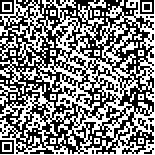| 牛虎军,谢益民,罗文琪,周安乡,薛超.絮凝沉淀与生物曝气滤池结合处理杨木心材生物化学机械法制浆废水[J].中国造纸学报,2024,39(1):38-46 |

二维码(扫一下试试看!) |
| 絮凝沉淀与生物曝气滤池结合处理杨木心材生物化学机械法制浆废水 |
| Study on the Treatment of Wastewater from Bio-CMP Process of Poplar Heartwood by Flocculation Combined with Biological Aeration Filter |
| 投稿时间:2022-11-03 修订日期:2022-12-13 |
| DOI:10.11981/j.issn.1000-6842.2024.01.38 |
| 中文关键词: 白腐菌 生物化学机械浆 絮凝沉淀法 生物曝气滤池 废水回用 |
| Key Words:white-rot fungus biochemical-mechanical pulp flocculation BAF wastewater reuse |
| 基金项目:国家自然科学基金项目(21878070);湖北省高等学校优秀中青年科技创新团队计划项目(T201205)。 |
|
| 摘要点击次数: 1465 |
| 全文下载次数: 749 |
| 中文摘要: |
| 本研究利用白腐菌Trametes sp.48424预处理杨木心材,结合絮凝沉淀与生物曝气滤池(BAF),处理化学机械法制浆过程中产生的综合废水,研究废水回用对生物化学机械法制浆及BAF的影响,探究处理后废水回用的可行性。结果表明,采用白腐菌预处理技术,能够抵消添加2%(相对于原料绝干质量)的NaOH所产生的CODCr。絮凝沉淀处理后,CODCr的最高去除率为49.9%。BAF处理后CODCr最高去除率可达91.8%,出水CODCr浓度降至39.8 mg/L,达到制浆废水回用和排放的标准。废水回用会降低BAF的整体效率,且处理后的废水回用于制浆系统,对浆料的成纸性能也会产生一定的影响;回用1次后出水CODCr浓度升至76.3 mg/L,故处理后的废水只能回用1次。 |
| Abstract: |
| In this study, poplar heart-wood were pretreated with the white-rot fungus Trametes sp. 48424. The integrated wastewater generated during chemical-mechanical pulping was treated by combining flocculation and precipitation with a biological aeration filter (BAF), to study the effect of wastewater reuse on biochemical-mechanical pulping and BAF, and to explore the feasibility of reuse of treated wastewater. The results showed that the use of white-rot fungus pretreatment technology could offset the CODCr produced by adding NaOH of 2% (relative to raw material oven dry weight). The maximum removal rate of CODCr after treatment was 49.9%. the maximum removal rate of CODCr treated by BAF was up to 91.8%. The effluent CODCr was reduced to 39.8 mg/L, which met the standards for reuse and discharge of pulping wastewater. Wastewater reuse would reduce the overall efficiency of the BAF, and the treated wastewater was reused in the pulping system, which would also result in a certain impact on the paper performance. After reuse once, the effluent CODCr rised to 76.3 mg/L, so the treated wastewater could only be reused once. |
| 查看全文 查看/发表评论 下载PDF阅读器 HTML |

